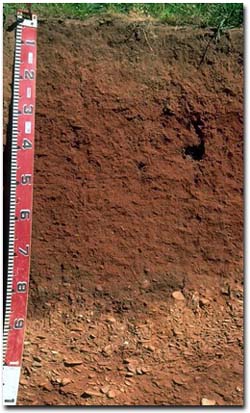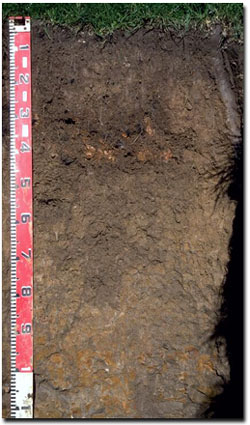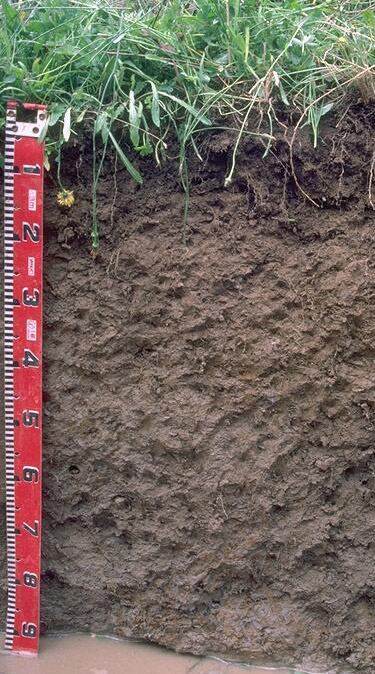Distribution of Victorian Dairy Soils
Back to: Victorian Dairy Soils
| There is a great diversity of soil types across Victoria’s dairying regions that reflect differences in parent material, topography, climate, biological activity and age (e.g. degree of weathering). These different soil types have a range of physical and chemical characteristics (e.g. structure, drainage, depth, pH, sodicity) that impact on management. The map of Victorian Dairy Soils presented here is a consistent and broad statewide overview that displays the dominant Soil Orders in each of the major dairying regions, using the Australian Soil Classification (Isbell, 2002). For more detailed mapping and information about regional soils and landforms in particular areas please access these regional areas of the VRO website: East Gippsland region West Gippsland region North Central region Goulburn Broken region North East region Also, the Soil and Land Survey Directory enables you to search for and access legacy soil and landscape survey reports based on a Local Government Area or catchment management region of interest. |
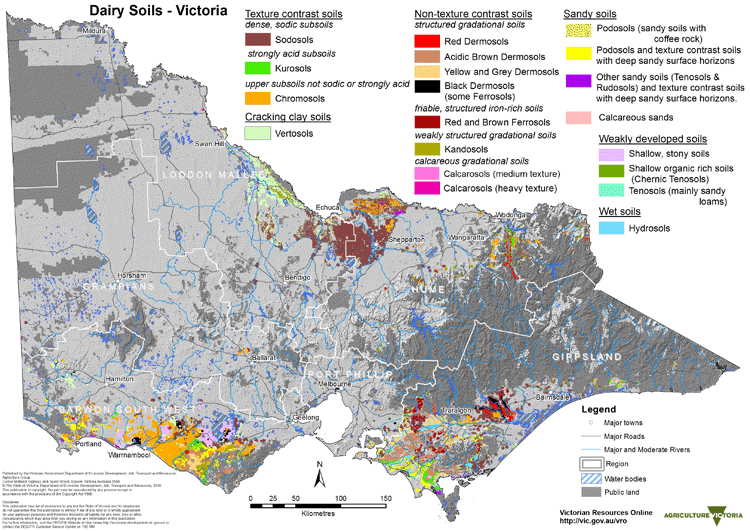
Further information on these soils can be found below:
| Texture contrast soils | Sodosols | Kurosols | Chromosols |
| Cracking clay soils | Vertosols | ||
| Sandy soils | Podosols | Tenosols | |
| Non texture contrast soils | Dermosols | Ferrosols | Kandosols |
| Shallow and stony soils | |||
| Wet soils | Hydrosols |
Victorian Dairy Soils (PDF - 1.3 MB)
The high resolution PDF file provided on this page can be viewed using the free Adobe Reader software and this can be installed from the Adobe website (external link). This PDF is provided with a high level of detail and with the intent that it should be printed at a high resolution.
Texture contrast soils
These soils are typified by a strong texture contrast between lighter textured surface (A) horizons and the heavier textured clay subsoil (B horizons). These can be can be divided into three broad Soil Orders; Sodosols, Kurosols and Chromosols, based on key subsoil properties such as pH and sodicity that are important for management.
| Sodosols have subsoils that are not strongly acid (i.e. pH >5.5 in water) but are sodic and usually dense and coarsely structured. Red Sodosols (previously referred to as red-brown earths) occur extensively on the older alluvial plains in northern Victoria. Black and Brown Sodosols occur in the South West where they are associated with basalt plains and rises. In Gippsland, Yellow and Brown Sodosols are common on the plains and rises to the east of Traralgon where rainfall is relatively lower. More detailed information about Sodosols in Victorian dairy regions | 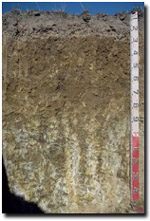 |
| Kurosols have clay subsoils that are strongly acid (i.e. pH less than 5.5 in water). They occur to a minor degree on hills in the higher rainfall dairying areas in Gippsland, South West and North Eastern Victoria. More detailed information about Kurosols in Victorian dairy regions | 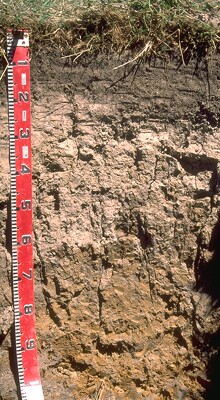 |
| Chromosols have clay subsoils that are not strongly acid (i.e. pH 5.5 or greater in water) and are non-sodic. Chromosols are most common on the volcanic plains in South West Victoria, particularly west of Camperdown. There are minor occurrences in West Gippsland and the North East. More detailed information about Chromosols in Victorian dairy regions. | 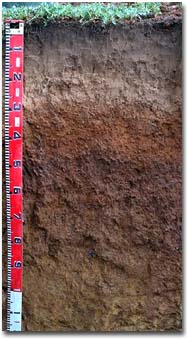 |
Cracking clay soils
| Cracking clay soils are referred to as Vertosols using the Australian Soil Classification. They are clay soils that shrink and swell causing seasonal cracking as the soil dries out. In the northern dairy region, Grey Vertosols are most common on large floodplains in the Murray and Loddon valleys in northern Victoria. There are some small occurrences in Gippsland and South West Victoria dairy regions and are often difficult to map at this statewide overview level where they may occur as minor components in many of the landscapes. More detailed information about Vertosols in Victorian dairy regions. | 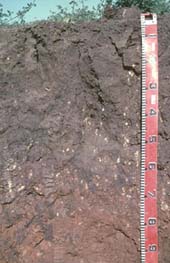 |
Sandy soils
| The most common sandy soils in Victorian dairy regions are Podosols. These are mainly sandy soils with accumulations of organic materials and aluminium (with or without iron compounds) - often referred to as “coffee rock” in the subsoil. Other sandy soils include weakly developed Tenosols, associated with older prior streams, or in current floodplain areas. Podosols are common in Gippsland dairying regions, particularly south of Sale. South of Leongatha, Podosols occur (along with other soils) on Tertiary and early Pleistocene sediments where they have formed within the surface horizons of older soil profiles and have a distinct hardpan below the surface (referred to as Parapanic). Podosols are also reasonably common in South West Victoria where they occur on sedimentary plains. More detailed information about Podosols in Victorian dairy regions. | 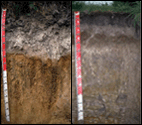 |
Non texture contrast soils
Dermosols are non-texture contrast earthy soils, that have moderately deep and reasonably structured subsoils.
| Well-structured Black Dermosols are common on alluvial plains near Maffra and on volcanic ash deposits in South West Victoria. | 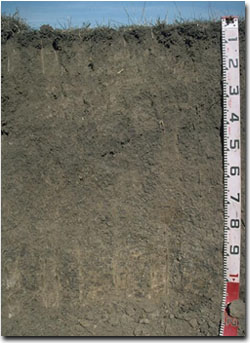 |
| Yellow and Grey Dermosols that are strongly leached and acidic are associated with older Tertiary landscapes in West Gippsland. They also occur on rises and plains associated with marl deposits in southwest Victoria where they tend to be calcareous at depth. More detailed information about Dermosols in Victorian dairy regions. | 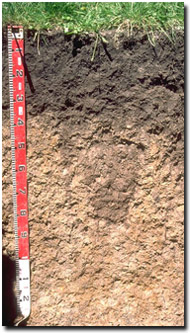 |
| Ferrosols (formerly referred to as ‘krasnozems’) are deep, strongly-structured and friable red and brown soils that have formed on basalt. They are high in free iron oxide and clay, and are generally strongly acid. Ferrosols are common in West Gippsland associated with the rolling older basalt hills around Warragul, Thorpdale and Leongatha. More detailed information about Ferrosols in Victorian dairy regions. |  |
| Kandosols are non-texture contrast earthy soils that have structureless, or only weakly structured, subsoils. More detailed information about Kandosols in Victorian dairy regions. |  |
Shallow and stony soils
| Very shallow and stony Dermosols and Rudosols occur on the stony rises surrounding Lake Corangamite and to the north and south of Derrinallum in South West Victoria. | 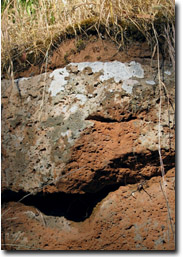 |
Wet soils
Relevant information elsewhere on VRO website
Legacy reports and documents related to soil assessment

